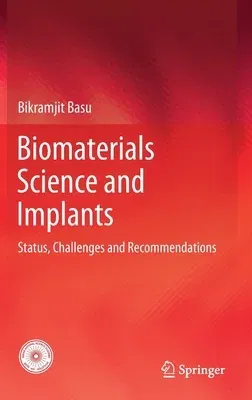Table of Contents
Foreword by M.S. Valiathan
Foreword by K. Vijay Raghavan
Preface
1. Crossing the Boundaries
1.1 Biomaterials Bloom
1.2 The New Science
1.2.1 The Key Elements
1.2.2 Defining Biocompatibility
1.2.3 Structural Concepts
1.3 International and National Markets
1.4 Biomaterials in Human Healthcare
1.4.1 Musculoskeletal Surgery and Orthopedics
1.4.2 Neurosurgical Treatment
1.4.3 Urological Treatment
1.5 India's Healthcare Initiatives and Translational Research
Facilitation
1.5.1 Kalam Institute of Health Technology and the Andhra Pradesh Med
Tech Zone
1.5.2 Niti Aayog and the National Health Stack
1.5.3 IKP Trust
1.6 Education and Human Resources
1.6.1 Bioengineering Curriculum
1.6.2 Medical Education and Research in India
1.7 Funding Status and Opportunity
1.7.1 National Schemes
1.7.1.1 Ministry of Science and Technology Funding
1.7.1.2 Biotechnology-focused funding
1.7.1.3 Recent Funding Schemes on Societally Relevant Areas
1.7.2 International Status
1.8 The Tailpiece
2. Scientists at Work
2.1 At the tipping point
2.2 All about joints: Hips, knees and spines
2.3 Bones and teeth
2.4 Cartilage, bone, cardiac and skin tissue engineering
2.5 Eyes and nerves
2.6 Antibacterial strategies
2.7 Regenerative Engineering
2.8 3D (Bio) printing biomaterials, tissues and organs
2.9 National Institutes of Importance and Centers of Excellence
2.9.1 Sree Chitra Tirunal Institute for Medical Sciences and Technology,
Trivandrum
2.9.2 School of International Biodesign, All India Institute of Medical
Sciences, New Delhi
2.9.3 BETiC (Biomedical Engineering and Technology Incubation Centre),
at IIT Bombay
2.9.4 Multi-institutional international research programs
2.10 Nota bene
2.11 A path ahead
3. International Status
3.1 Biomaterials Research Consortia of Global Importance 2
3.1.1 Prometheus Group, KU Leuven, Belgium
3.1.2 McGowan Institute for Regenerative Medicine, University of
Pittsburgh
3.1.3 "Cúram - Centre for Research in Medical Devices", National
University of Ireland Galway
3.1.4 Wyss Institute at Harvard University, USA
3.1.5 Centre for Translational Bone, Joint and Soft Tissue Research at
TU Dresden, Germany
3.1.6 Istituto di Scienza e Tecnologia dei Materiali Ceramici (ISTEC),
Italy
3.1.7 3B's Research Group, University of Minho, Portugal
3.1.8 National Institute of Standards & Technology (NIST), Gaithersburg,
MD, USA
3.1.9 Wake Forest Institute for Regenerative Medicine, Winston-Salem
North Carolina, USA
3.2 Multi-institutional research initiatives and training centers
3.2.1 Henry Royce Institute, UK
3.2.2 MatSan, France
3.2.3 Materials Assembly and Design Excellence in South Carolina (MADE
in SC), Clemson University
3.2.4 "MD3: a new consortium for Materials Discovery, Development and
Deployment", Georgia Institute of Technology, USA
3.2.5 ARC Training center for Innovative Bioengineering, Australia
3.3 Closure
4. A Challenging Frontier
4.1 Challenge 1: Strengthening basic research in the quest for Next-Gen
biomaterials
4.2 Challenge 2: Building translational research for human health
4.3 Challenge 3: Nourishing industry collaborations, incubators and
start-ups
4.4 Challenge 4: Accelerating regulatory approval
4.5 Challenge 5: Medical education and the clinical research ecosystem

